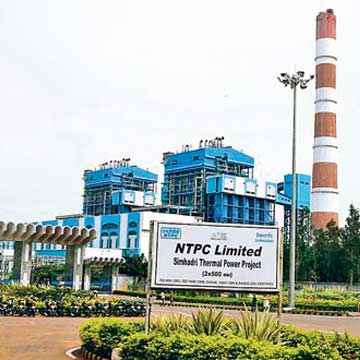 New Delhi:
New Delhi: A recent Morgan Stanley report has downgraded the Indian utilities industry. It highlighted that renewable energy is becoming so cheap that thermal power, mostly coal, is uncompetitive.
This is a highly significant market signal which will likely be accompanied by growth in the already impressive list of high calibre international investors moving into India's renewables sector, including from Japan, the Netherlands, Italy, China, France, Australia, Singapore, Hong Kong and Canada.
The Institute for Energy Eonomics and Financial Analysis (IEEFA) has long predicted India's growing global leadership role in the transformation to a low carbon economy. But it is happening at a speed faster than we dared to imagine.
India's draft National Electricity Plan forecasts that 57 per cent of the country's energy capacity will be from renewables and other zero emissions technologies by 2027. This is well ahead of the Paris target of 40 per cent by 2030.
But this is not fundamentally a matter of environmental concern. It is common sense economics since solar is now cheaper than existing coal-fired generations.
Indian state-owned utility National Thermal Power Corporation (NTPC) is a case in point. IEEFA's recent report on NTPC details how, despite its deep historical connection to coal-fired electricity generation technology, it stands to be one of the country's key clean energy enablers.
The company provides 25 per cent of India's electricity supply and as such it plays a critical role in the country's economic activity. With economic growth at 7-8 per cent annually, India is the world's fastest-growing major economy.
Last week, a news report stated that NTPC was planning to invest $10 billion in three new coal-fired power stations over the next five years. Citing senior officials, the article stated that the expected 5 GW of coal would nearly double the capacity of those currently being phased out. It went on to say that if built it would "raise questions about Prime Minister Narendra Modi's vow to stand by commitments under the Paris climate accord".
This is a misrepresentation of the actualities. NTPC's current development pipeline represents its past more than its future.
The latest National Electricity Plan has made it clear that no new coal-fired generation will be needed beyond what is already planned. The Power Ministry has stated that 11GW of NTPC's older coal-fired plants will be shut down over the next five years, to be replaced by new, super-critical plants in an effort to increase efficiency and reduce India's carbon footprint. In an electricity market where demand is growing plus-six per cent per annum, a one per cent per annum expansion of coal capacity is still likely to be needed. If current trends persist, new demand will increasingly be covered by lower cost renewables. NTPC will be a key enabler of this transformation.
Its Chairman and Managing Director Gurdeep Singh, in his discussion with IEEFA, noted that it expects to progressively close end-of-life inefficient coal capacity. This will mean its net thermal addition is more like 1 GW per annum.
Indian thermal power plants are now operating at a utilisation rate of 50-60 per cent. This is mainly because demand has not kept up with the rollout of new fossil fuel generation infrastructure. One innovative solution being proposed to maximise such existing assets is to build solar PVs around them. This will leverage current land and grid connectivity and allow NTPC to continue to supply 24X7 power as needed -- solar in the day and coal as the balance.
NTPC is also playing an important role in private solar developments by purchasing the electricity. Its strong balance sheet de-risks such private investment, helping to drive down the cost of solar in a country that has seen a succession of low-cost records set and then broken in 2017. There has also been a move into hydropower and electric vehicle charging infrastructure, further diversifying NTPC away from coal.
All of this is a major strategic shift for NTPC.
Utilities in many countries, including the US, Germany, France, Italy and Australia, are at various stages of business-model transformation in response to a rapidly changing technology and investor-driven environment. As innovation continues, acceleration towards a cleaner economy will take an exponential trajectory.
NTPC stands to be a cornerstone in India's national electricity transformation, which has now reached critical mass. As per the recent Blackrock (the largest investor in the world) announcement -- coal is dead. It will take decades to fully transition, but the process is now unstoppable.
# Tim Buckley, is Director of Energy Finance Studies at IEEFA. The views expressed are those of the IEEFA. He can be contacted at tbuckley@ieefa.org
 New Delhi: A recent Morgan Stanley report has downgraded the Indian utilities industry. It highlighted that renewable energy is becoming so cheap that thermal power, mostly coal, is uncompetitive.
New Delhi: A recent Morgan Stanley report has downgraded the Indian utilities industry. It highlighted that renewable energy is becoming so cheap that thermal power, mostly coal, is uncompetitive.